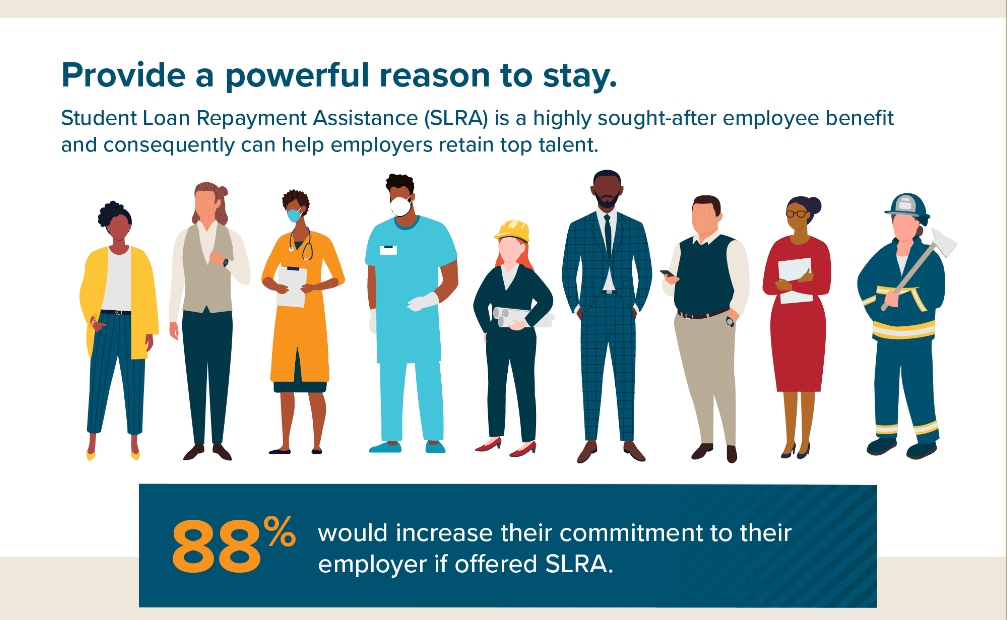How Many Millennials are Paying off Student Debt: A Deep Dive

As of the latest data, approximately 15 million Millennials are currently paying off student debt. This debt impacts a significant portion of the generation aged 25 to 40.
The challenge of paying off student loans is a defining feature for many Millennials, a generation grappling with the overwhelming burden of educational expenses. Their quest to achieve financial freedom is often overshadowed by the sizeable debt accumulated through college and university education.
This generation has been influential in sparking discussions around the cost of higher education and the potential need for reform. Dealing with monthly payments, interest rates, and the balance between debt and living expenses, Millennials continue to navigate the complexities of student loans as they move towards their financial goals. Offering a unique insight into the economic pressures faced by younger adults today, the issue of student loan repayment remains a pressing topic on the national agenda.

Credit: www.attigo.com
The Millennial Burden
The phrase “Millennial Burden” often conjures up images of young adults tethered to substantial financial obligations. Among these, student loans loom large, representing a significant hurdle for many in this generation. Let’s dive into the current state of student debt for millennials and see how they stack up against other generations.
Snapshot Of Student Debt
Millennials carry more student debt than any previous generation. This group faces unique challenges when it comes to educational loans. Recent data paints a stark picture:
- Over 44 million Americans are burdened by student loan debt.
- Millennials account for a substantial segment of this group.
- On average, a millennial with student debt owes close to $30,000 upon graduation.
- Repayment plans often extend to 20 years or more, suggesting long-term financial planning around this debt.
Comparative Debt Analysis By Generation
Understanding student debt requires looking at different age groups. Millennials stand out with their levels of student debt, compared to Generation X and Baby Boomers at similar life stages.
| Generation | Average Debt at Graduation | Percentage with Student Debt |
|---|---|---|
| Millennials | $30,000 | 68% |
| Generation X | $20,000 | 58% |
| Baby Boomers | $12,000 | 49% |
The table above reveals a clear trend. Millennials face steeper financial burdens from student loans than generations before them. This impacts their choices in purchasing homes, starting families, and investing for the future.

Credit: www.neebc.org
Paying The Price Of Education
Paying the Price of Education is a reality for many Millennials as they navigate their financial futures. Saddled with student debt, this generation often faces a substantial economic burden. As they invest in their careers, repayment looms on the horizon, and the financial pressure is palpable. Understanding the sheer magnitude of this issue reveals the weight of the choices made in pursuit of higher education.
Average Student Loan Amounts
Millennials are graduating with more than just a diploma; they’re also receiving a substantial debt burden that can follow them for decades. Here’s a snapshot of what that looks like on average:
| Type of Institution | Average Debt |
|---|---|
| Public Colleges | $25,550 |
| Private Nonprofit Colleges | $32,300 |
| For-Profit Colleges | $39,950 |
These figures represent significant sums that can influence life decisions, from buying a house to starting a family.
The Long-term Cost Of Student Loans
The impact of student loans extends far beyond graduation day. The true cost includes not just the borrowed amount, but also the interest that accrues over time. Here’s how it breaks down:
- Interest accumulation can double the initial loan amount over time.
- Longer repayment terms mean more interest paid.
- Deferment or forbearance adds to the cost as interest continues to grow.
- Higher debt can lead to postponing major life events like home ownership.
- Student loans can affect credit scores, influencing future borrowing capacity.
These long-term implications underscore the importance of understanding student loan strategies early on.
Navigating Loan Repayment
A large number of millennials grapple with student debt. Loan repayment emerges as a relentless challenge. Strategy is key to managing this financial hurdle. Let’s explore effective methods to alleviate student debt.
Strategies For Managing Student Debt
Effective debt management requires a plan. Consider these steps to take control of student loans:
- Analyze your debt – Know what you owe. Outline all loans, interest rates, and due dates.
- Refinance – Lower your interest rates. Secure a new loan with better terms.
- Budget wisely – Allocate funds for debt repayment. Trim non-essential expenses.
- Extra payments – Pay more than the minimum. Focus on high-interest loans first.
- Use windfalls – Apply unexpected money, like tax refunds, to your debt.
Loan Forgiveness And Government Aid
The government offers relief options. These programs can partially or fully erase student debt.
| Program | Description | Eligibility |
|---|---|---|
| Public Service Loan Forgiveness | Forgive the remaining balance. | Qualify with public service. |
| Teacher Loan Forgiveness | Erase up to $17,500. | Teach five years in certain schools. |
| Income-Driven Repayment Plans | Cut monthly payments. | Show partial financial hardship. |
Check eligibility criteria on the Federal Student Aid website. Meet deadlines for applications. Seek advice from a financial advisor if needed.
Impact On Millennial Lifestyles
The student debt crisis looms over millennials, profoundly influencing their everyday lives and long-term plans. The financial hangover from years spent in academia is not merely a monthly bill—it’s a weight that reshapes futures.
Delay In Major Life Milestones
Crippling student debt often forces millennials to put significant life events on pause. Homeownership, for example, feels out of reach for many. With substantial loan payments, saving for a down payment becomes a herculean task. Let’s examine this further:
- Homeownership: High debt-to-income ratios deter mortgage approvals.
- Marriage: Debt influences relationship dynamics and postpones weddings.
- Starting a Family: The costs of child-rearing add to existing financial burdens.
- Career Choices: Many opt for higher-paying jobs over preferred vocations.
Financial Wellness And Mental Health Concerns
The stress from relentless debt servicing extends well beyond millennials’ wallets. Financial struggles can trigger serious mental health issues. This debt stress impacts daily living, with the following noteworthy effects:
- Increased anxiety and depression rates linked to financial strain.
- Higher stress leading to physical health problems.
- Reduced spending on leisure and self-care compounds stress.
- Persistent worry over debts diminishes overall happiness.
In summary, student debt casts a long shadow over millennials, permeating every corner of their lifestyles.
Societal And Economic Ramifications
The burden of student debt is more than just a personal finance issue for Millennials; it extends to broader societal and economic consequences. The ripple effects impact major life decisions and the overall economic health of a generation. Below, we look at how these financial obligations have played out in real-world scenarios affecting the housing market and the wider economy.
Effects On The Housing Market
As countless Millennials struggle to pay off student loans, their ability to purchase homes is significantly hampered. Here’s how this debt is affecting the housing market:
- Delayed Homeownership: Many are postponing buying homes until debt is manageable.
- Lower Homeownership Rates: Statistics show a correlation between student debt and reduced rates of homeownership among young adults.
- Impact on Housing Prices: When fewer Millennials buy homes, demand shifts and can influence market prices.
Broader Economic Implications
The economic implications of student debt are vast and varied:
- Student debt can limit purchasing power affecting overall consumer spending.
- It often leads to delayed investment in retirement savings, impacting future economic stability.
- Millennials might take fewer entrepreneurial risks, possibly stifling innovation and business growth.
Table 1 below shows the percentage of Millennials who have delayed financial milestones due to student debt:
| Financial Milestone | Percentage Delayed |
|---|---|
| Home Purchase | 36% |
| Retirement Savings | 29% |
| Starting a Business | 19% |
Looking Forward
As we move into the future, Millennials face the challenge of student debt. Strategies emerge to ease this financial burden. These ideas shine a light on the path ahead. They reveal ways to manage and eventually overcome student loan debt.
Emerging Trends In Higher Education Funding
Educational funding is evolving. Students and universities explore new options:
- Income Share Agreements (ISAs) enable students to pay tuition after graduation, based on income.
- Employer-sponsored tuition programs help workers attend college with company support.
- Crowdfunding for education gathers small contributions from many people online.
- Online learning and accreditation make higher education more accessible and affordable.
Policy Proposals And Potential Solutions
Lawmakers debate various policies to reduce the student loan burden. These include:
| Policy | Effect |
|---|---|
| Loan forgiveness | Direct relief for borrowers meeting specific criteria. |
| Income-driven repayment plans | Payments match a borrower’s income, ensuring affordability. |
| Refinancing options | Lower interest rates make loans cheaper over time. |
| Free community college | Eliminates tuition for two-year degrees, reducing overall debt. |
These policies aim to create a brighter financial future for Millennials. Efforts continue to turn ideas into action. With commitment, student debt can shift from a lifelong burden to a manageable part of Millennials’ financial landscapes.

Credit: theblacktux.com
Frequently Asked Questions On How Many Millennials Are Paying Off Student Debt
What Percentage Of Millennials Have Student Debt?
According to recent data, about 1 in 4 Millennials carry student loan debt. This reflects a significant portion of the generation impacted by higher education costs. The exact percentage fluctuates, typically ranging between 20% to 30%.
How Long Does It Take Millennials To Pay Off Loans?
On average, it takes Millennials about 20 years to pay off their student loans. However, this duration varies greatly depending on the loan amount, repayment plan, and personal financial management strategies individuals employ.
What Is The Average Student Debt For Millennials?
The average student loan debt for Millennials hovers around $30,000. This figure can vary widely based on the level of degree pursued and institution attended. It’s a sizable financial burden that affects their economic choices.
Are Millennials Delaying Life Events Due To Student Loans?
Yes, many Millennials are delaying major life events like buying a home, getting married, or starting a family due to the financial strain of student loans. This debt influences their priorities and financial planning.
Conclusion
Navigating student debt is a common challenge for many millennials. Our insights reveal a mix of struggles and triumphs in their financial journeys. It’s clear that devising smart repayment strategies is key. As millennials continue to tackle their loans, financial literacy becomes crucial.
Let’s encourage and support their progress towards a debt-free future.







